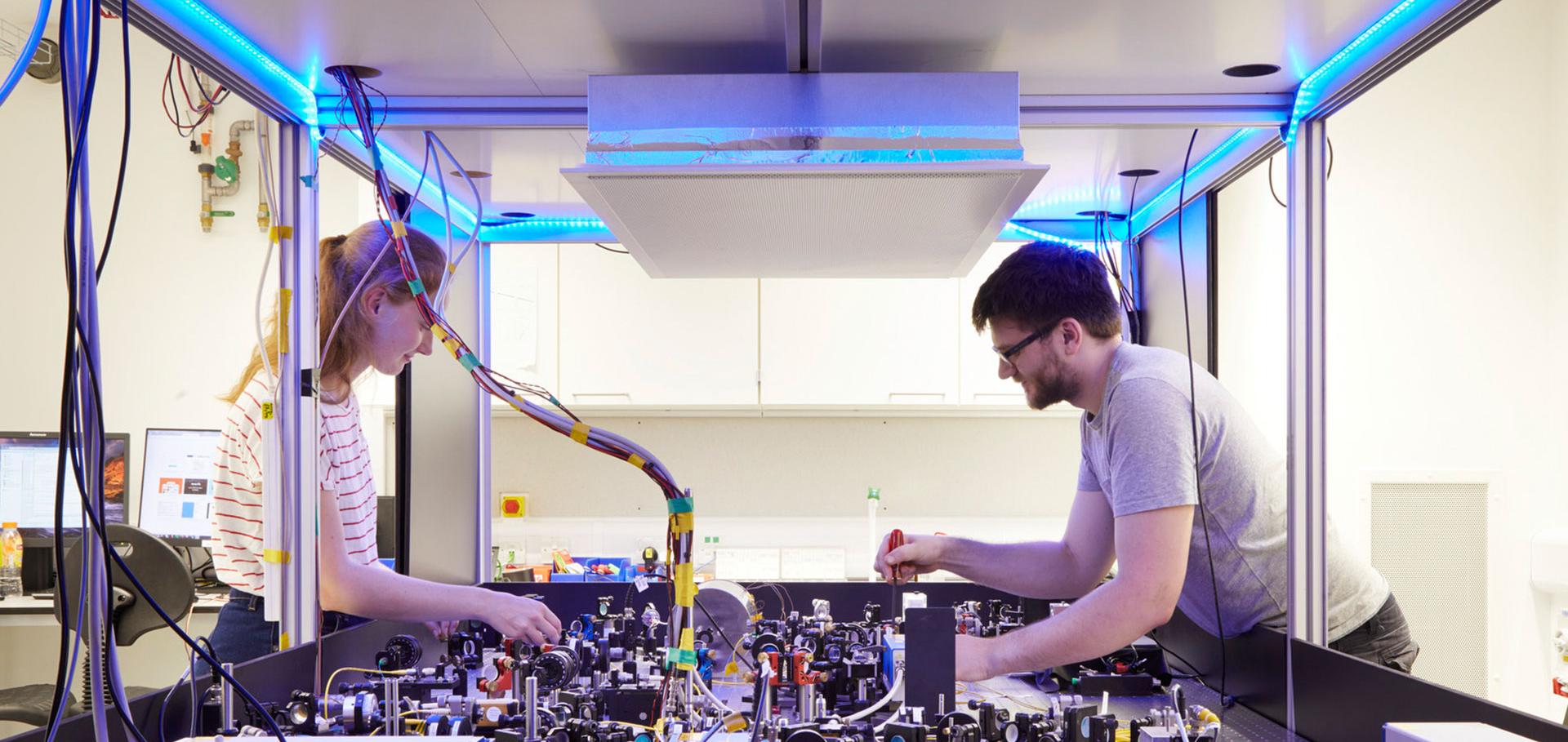Free-space spectro-temporal and spatio-temporal conversion for pulsed light.
Optics Letters Optica Publishing Group 41:18 (2016) 4328-4331
Quantum Correlations from the Conditional Statistics of Incomplete Data.
Physical review letters 117:8 (2016) 083601-083601
Abstract:
We study, in theory and experiment, the quantum properties of correlated light fields measured with click-counting detectors providing incomplete information on the photon statistics. We establish a correlation parameter for the conditional statistics, and we derive the corresponding nonclassicality criteria for detecting conditional quantum correlations. Classical bounds for Pearson's correlation parameter are formulated that allow us, once they are violated, to determine nonclassical correlations via the joint statistics. On the one hand, we demonstrate nonclassical correlations in terms of the joint click statistics of light produced by a parametric down-conversion source. On the other hand, we verify quantum correlations of a heralded, split single-photon state via the conditional click statistics together with a generalization to higher-order moments. We discuss the performance of the presented nonclassicality criteria to successfully discern joint and conditional quantum correlations. Remarkably, our results are obtained without making any assumptions on the response function, quantum efficiency, and dark-count rate of photodetectors.Attosecond sampling of arbitrary optical waveforms
Optica Optica Publishing Group 3:3 (2016) 303-310
Attosecond sampling of arbitrary optical waveforms
Optica Optical Society 3:3 (2016) 303-310
Abstract:
Advances in the generation of ultrashort laser pulses, and the emergence of new research areas such as attosecond science, nanoplasmonics, coherent control, and multidimensional spectroscopy, have led to the need for a new class of ultrafast metrology that can measure the electric field of complex optical waveforms spanning the ultraviolet to the infrared. Important examples of such waveforms are those produced by spectral control of ultrabroad bandwidth pulses, or by Fourier synthesis. These are typically tailored for specific purposes, such as to increase the photon energy and flux of high-harmonic radiation, or to control dynamical processes by steering electron dynamics on subcycle time scales. These applications demand a knowledge of the full temporal evolution of the field. Conventional pulse measurement techniques that provide estimates of the relative temporal or spectral phase are unsuited to measure such waveforms. Here we experimentally demonstrate a new, all-optical method for directly measuring the electric field of arbitrary ultrafast optical waveforms. Our method is based on high-harmonic generation (HHG) driven by a field that is the collinear superposition of the waveform to be measured with a stronger probe laser pulse. As the delay between the pulses is varied, we show that the field of the unknown waveform is mapped to energy shifts in the high-harmonic spectrum, allowing a direct, accurate, and rapid retrieval of the electric field with subcycle temporal resolution at the location of the HHG.Cavity-enhanced room-temperature broadband Raman memory
Physical Review Letters American Physical Society 116:9 (2016) 090501


